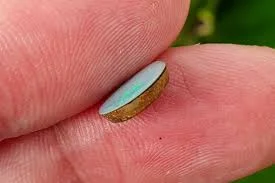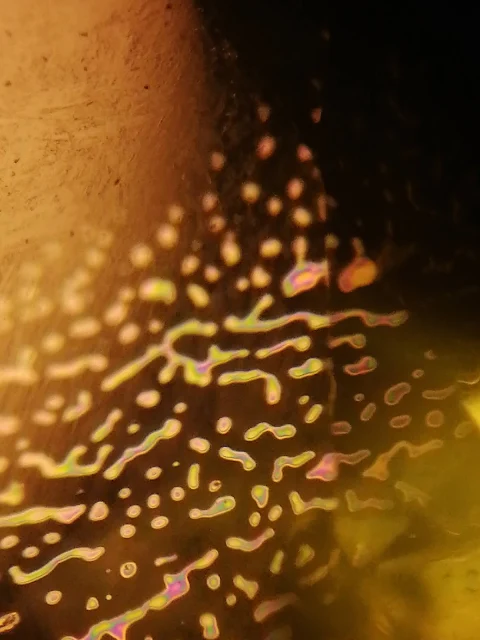Simulants and Imitations in Gemstones
There are many gem materials, natural or otherwise, that have the same appearance as the gem they imitate. These materials are known as simulants or imitations, and they can be difficult to distinguish from the real thing. Some common examples include:
- Synthetic cubic zirconia (imitates diamond)
- Red spinel (imitates ruby)
- Doublet or triplet opals (imitate solid opals)
- Quartz (imitates various gems, including amethyst, citrine, and topaz)
- Glass (imitates various gems, including emerald and sapphire)
It's important to note that simulants and imitations are not the same as synthetic gems. Synthetic gems are made in a laboratory and have the same chemical and physical properties as their natural counterparts. Simulants and imitations, on the other hand, may have different properties and are generally less valuable than the gems they imitate.
Identifying Simulants and Imitations
Identifying simulants and imitations can be challenging, but there are a few things you can look for:
- Price: If a gemstone seems too good to be true, it probably is. Simulants and imitations are generally less expensive than the real thing.
- Appearance: Simulants and imitations may have a different appearance than the gem they imitate. For example, synthetic cubic zirconia may have more fire than a diamond.
- Weight: Some simulants and imitations may be lighter or heavier than the gem they imitate.
- Refractive index: The refractive index of a gemstone can be used to identify it. Simulants and imitations may have a different refractive index than the gem they imitate.
If you are unsure about the authenticity of a gemstone, it's always best to have it examined by a professional gemologist.
Man-Made Gem ( Artificial Gems) :
Same As A Synthetic Gem, Except Having No Natural Counterpart. Example YAG, Cubic Zirconia.
Composite or Assembled Gemstones
Composite or assembled gemstones are made by cementing two or three pieces together to produce a single stone. In general, when two pieces are cemented together, they are known as doublets and when three pieces are used, they are known as triplets. Irrespective of whether the stone is a doublet or a triplet, it is essential to be aware of their existence and also to know the means to identify them.
Identifying composite or assembled gemstones can be challenging as they may look similar to natural gemstones. Here are some tips to help you identify them:
- Look for a visible seam or line where the pieces are joined together
- Check for differences in color between the pieces
- Look for air bubbles or other inclusions that may indicate the presence of more than one piece
- Examine the stone from different angles to check for differences in transparency or color
Composite stones are made for the following reasons:
Composite stones are made by combining two or more materials to produce a single stone. They are used for a variety of reasons and are often difficult to distinguish from natural gemstones. Here are some of the reasons why composite stones are made:
- To improve color and appearance: By combining different materials, a composite stone can be made to have a more vibrant color or a more interesting pattern than a natural gemstone.
- To improve phenomena: Some gemstones exhibit phenomena such as iridescence or color change. By combining two or more stones, these phenomena can be enhanced.
- To improve durability: Some gemstones are too soft to be used in jewelry, but can be made more durable by coating them with a harder material or by attaching them to a stronger base.
- To gain weight: Some gemstones are more valuable by weight, so by combining two or more stones, their value can be increased.
- To imitate any other gemstone: Composite stones can be made to look like any other gemstone, which can be used to deceive buyers or to create a more affordable alternative to a natural gemstone.
Identification: Certain standard guidelines must be maintained while identifying composite stones.
- Lustre: Varying surface lustre in some cases.
- R.I. for two opposite surfaces i.e. table and pavilion facets.
- Immersion: Composites must be examined immersed in a liquid, preferable with additional magnification.
- Two or more distinct parts are visible i.e. varying relief.
- A separation junction plane is seen.
- Inclusions will vary in the two parts e.g. natural and synthetic inclusion.
- Flattened gas bubbles along the junction plane may be visible.
- Coloured cementing material when present.
- U.V.: Varying fluorescence in different portions.
- Polariscope: Optic axis direction in the two portions may vary. Commonly observed composite stones: Opal, Ruby, Sapphire, Beryl group, spinel etc
Composite stones are classified into categories using different parameters. One system employed, stresses the nature of the gemstones used as is seen in the following examples.
- True Doublets: Two pieces of the same species but of different qualities e.g. Sapphire on ruby, opal on opal.
 |
| Bubbles are trapped in between two pieces |
Another form of classification makes use of any one specific optical property such as R.I., as a standard. In this case a systematic grouping can be done by considering the R.I. ranges for the crown or table or upper portion of the composite stone.
Commonly observed composite stones.
- Opal: Composites are generally made:
- To provide support to thin slices of opal.
- To enhance the play of colour.
- To gain weight.
- Opal Doublet: Opal slice backed by black chalcedony, black glass or potch opal. The cementing material may be black or a dark coloured substance.
- Opal Triplet: A thin opal slice is covered by a rock crystal dome & backed by black chalcedony. The opal slice may be natural or synthetic.
Identification is easier if the stone is immersed in water to observe the junction plane. Care should be taken not to mistake a layer of natural opal matrix which is left while cutting, for a doublet or triplet.
 |
| A thin layer of opal can be easily seen. |
- Quartz: Since quartz is widely available this is commonly used in composites. Originally, rock crystal on rock crystal cemented with green coloured gelatine was popularly sold as soude emerald (from the French – soldered emerald) as an emerald imitation. Nowadays, both quartz doublets and triplets are available and serve to simulate most gemstones.
A green-coloured layer of cement enhances the composite while crown & pavilion are made of colourless glass or goshenite or rock crystal etc. - Beryl: Composites are made using either colourless or light coloured beryl with or without coloured cement. Commonly they are made to simulate aquamarine and emerald.
- Jade: Triplets are made from three pieces of translucent white jadeite. The top portion is a hollow cabochon, the middle is a dyed green jadeite cabochon which fits into the hollow cabochon and the base is an oval cabochon. The entire piece is then re-polished to eliminate traces of the joining planes. Inset jewellery these cabochons are not very easy to identify.
- Spinel: Triplets are made using colourless synthetic spinel for the crown and pavilion, and a coloured gelatine layer or coloured glass cemented in the middle. A wide range of colours is produced and therefore most gemstones can be simulated.
- Garnet: Garnet topped doublets are some of the oldest known doublets.
- Almandine garnet has the ability to fuse with glass which eliminates the need for a cementing material.
- Though the almandine slice is red, all possible colours can be got by using different coloured glasses.
- These doublets can be deceptive since the junction plane can be in any orientation and not always as the conventional plane parallel to the table facet.
- An additional identification technique is a red-ring test, which is observed by placing the stone table down on a white background.
- A white light source is held directly above the culet and a shadow or a red ring falls on the white surface.
- This may not be visible in the case of red or violet stones. The red flag effect may be observed while an R.I. is taken on the table facet and is seen as a shadow on the refractometer scale.

Gas bubbles in garnet topped doublet
- Corundum. These are some of the most common doublets which are available. Some possible combinations are listed below:
Crown Natural Green Sapphire Overall the color is blue. Pavilion Synthetic Blue Sapphire Crown Natural Green Sapphire Overall colour is red. Pavilion Synthetic Ruby Crown Synthetic White Sapphire The overall effect is colourless. Pavilion Strontium Titanate








No comments:
Post a Comment